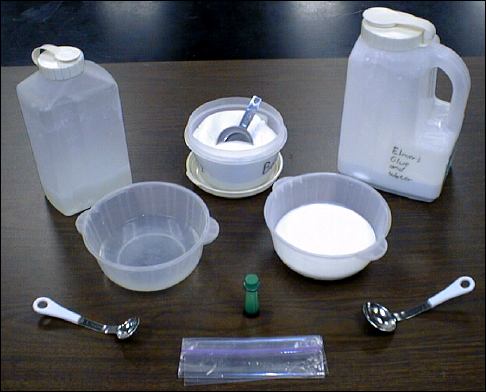
Background:
The term "Oobleck" is derived from the book Bartholomew and the Oobleck,by Dr. Seuss. Experimenting with Oobleck is much more than having fun with a weird substance. As students participate in this activity, they will develop important skills in scientific observation. Scientists at Jefferson Lab use a similar process to investigate quarks in the nucleus of the atom.
Objectives:
In this activity students will:
- work in groups
- follow a recipe to make Oobleck
- measure the proper amounts of each ingredient
- use all of their senses, except taste, to discover as many properties of Oobleck as they can
- record their observations on the Oobleck Investigation Sheet
- classify each property they find as being a property shared by solids, liquids or gases
- classify Oobleck as either a solid, liquid or gas
Minimum Materials Needed for Each Student Group:
- A Ziploc sandwich bag
- A tablespoon
- A teaspoon
- 30 milliliters (2 tablespoons) of a glue-water solution
- 10 milliliters (2 teaspoons) of a borax-water solution
- 2 drops of food coloring
Optional Materials:
- Newspapers to cover the desks
- Small bowls to hold the two solutions
- Containers to save extra solution

Materials for Oobleck
Pre-Activity Preparations:
The Glue-Water Solution
1. Empty a bottle of Elmer's School Glue into a small container.
2. Add an equal volume of water.
3. Mix thoroughly.
The Borax-Water Solution
1. Place 1 liter of water in a small container.
2. Add 60 milliliters of dry Borax powder to the water.
3. Mix thoroughly.
Notes:
- It is not uncommon for some of the Borax to remain undissolved.
- Elmer's Glue-All works just as well as Elmer's School Glue. In addition, we have been able to buy Elmer's Glue-All in gallon containers from home improvement centers.
- If kept in sealed containers, the two mixtures can be stored for several months as long as they are mixed well before use.
Citation and linking information
For questions about this page, please contact Lisa Surles-Law.
